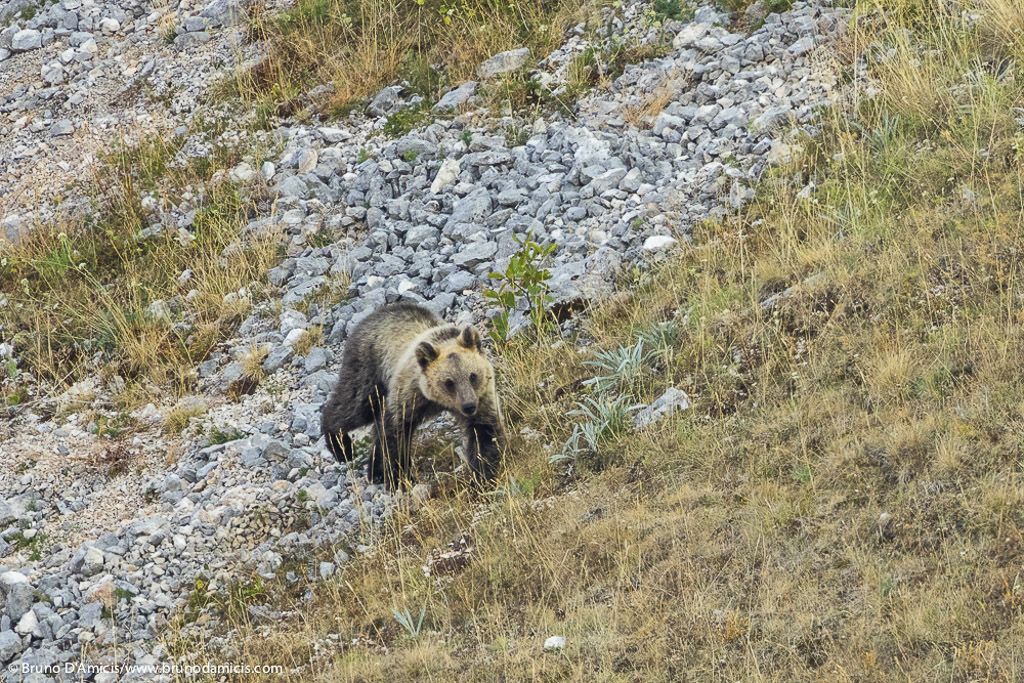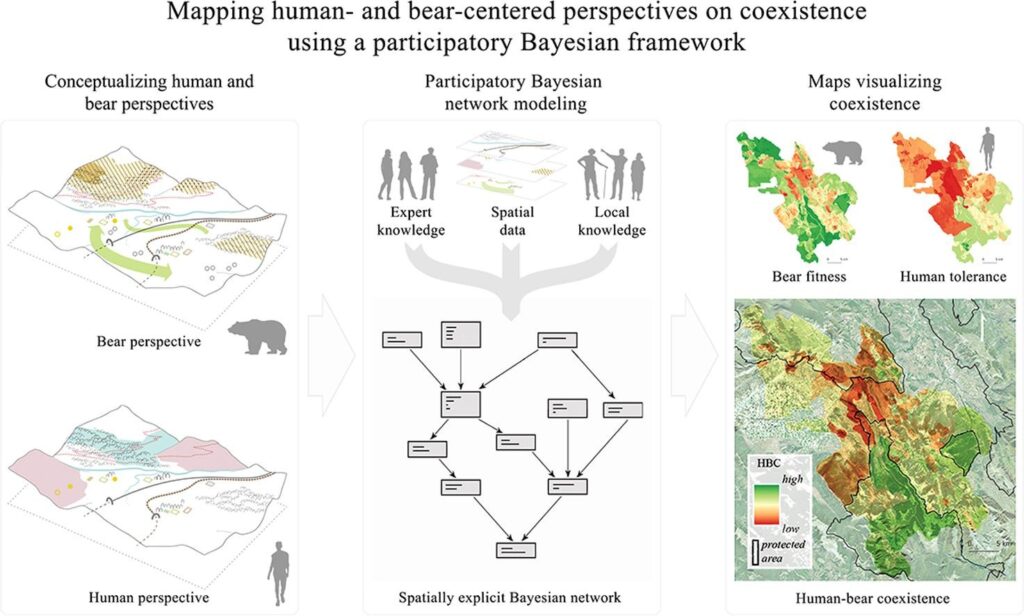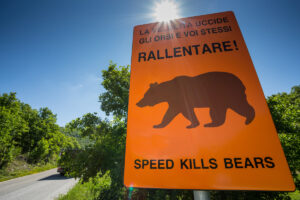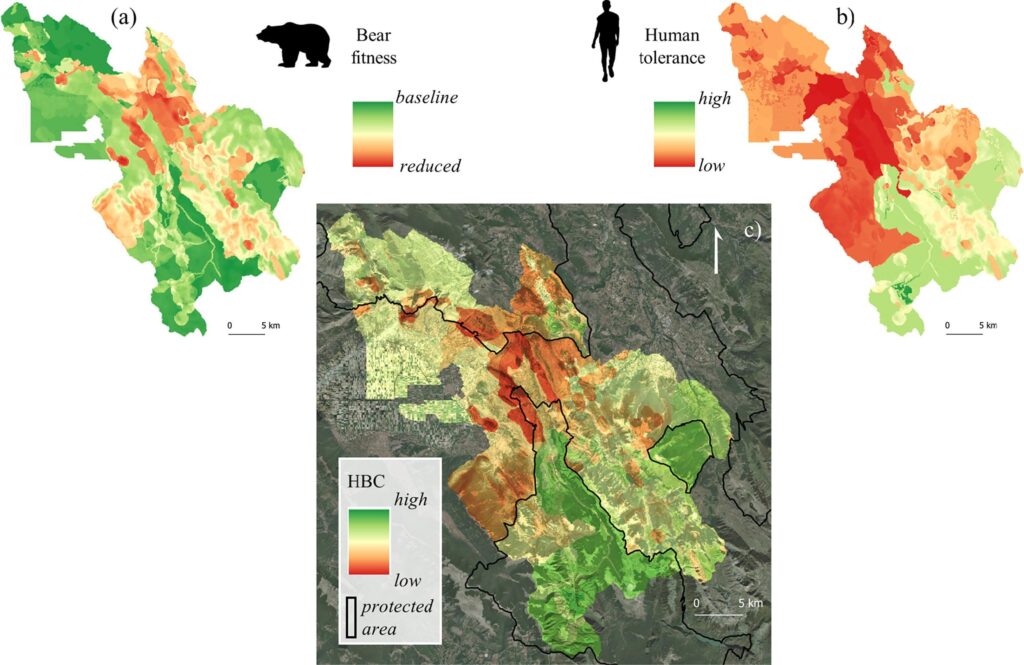Coexistence between large predators and humans is essential to conservation. An innovative map, created thanks to the collaboration between scientists and local communities, highlights the critical areas and contributes to the planning of coexistence and conservation measures designed to meet the needs of the territory.

There is no conservation without coexistence, and anyone involved in rewilding knows this well. Any conservation plan, local or international, has to take into consideration human-wildlife coexistence. This theme becomes extremely central when the species involved belongs to the group of large carnivores. Paula Mayer – rewilding enthusiast and researcher, she was a volunteer for Rewilding Apennines and Salviamo l’Orso in 2019 and she regularly visits Central Apennines since then – and her team approached the issue from an innovative point of view, carrying out a participatory study on the coexistence between human and Marsican bear (Ursus arctos marsicanus) in an area of 1,006 km2 between the Abruzzo, Lazio and Molise National Park, the Sirente Velino Regional Park and the Monte Genzana Alto Gizio Regional Nature Reserve. The result is a map that highlights the critical issues and areas for coexistence, taking into consideration both the point of view of local communities and the needs of bears, to give decision makers the tools to study and apply coexistence measures adapted to needs of each community (Paula Mayer, Adrienne Grêt-Regamey, Paolo Ciucci, Nicolas Salliou, Ana Stritih – Mapping human- and bear-centered perspectives on coexistence using a participatory Bayesian framework. Journal for Nature Conservation, Volume 73, 2023).
Coexistence: the great challenge of our time
In the last few decades, large carnivore species have experienced a period of population growth and territorial expansion throughout Europe. Member states governments have worked on reinforcing wild animals’ protection and nature conservation, they have increased the extension of protected areas and consequently, wild ungulate populations have increased. These newly favourable conditions have allowed species such as wolves and bears to catch up in the fight against extinction. The support of the public opinion has proven to be essential to achieve these results. The coexistence of humans and fauna is a cornerstone of conservation, without that the scientists would not achieve the same results. Nowadays, however, coexistence with large carnivores is also one of the greatest conservation challenges of our times.
Coexistence with large predators depends on several factors: if on the one hand large carnivores can significantly affect ecosystem dynamics and provide important socio-economic benefits to local communities through the growing phenomenon of nature-based tourism, on the other hand they can be a source of concern since they damage human property (such as livestock) and, in rare cases, they can also be a threat to human safety. However, from the animals’ perspective, human activities are a source of disturbance leading to behavioural changes with possible long-term effects on an entire population. In addition, human activities and infrastructures can represent an actual threat to wild animals’ health and survival.
More often than not, human-wildlife relationship has been described as conflicted. Most of the studies carried out so far have analysed the relationship either from human perspectives (e.g., wildlife damages on crops and farm animals), or from the wildlife point of view (e.g., human disturbance, wildlife roadkills). On the contrary, models such as the one presented by Paula Mayer and her colleagues in their study take into account the necessities of both humans and large carnivores, integrating social and ecological aspects in line with the most modern rewilding objectives. The combination of scientific data on large predators, the expertise of scientists that have been working with them for years and the experiences and opinions of the locals, makes it possible to develop a conservation plan that works for both humans and wildlife.

Community-friendly plans
Thanks to Salviamo l’Orso and Rewilding Apennines the scientists were able to map bears movements in the study area. They also conducted three rounds of interviews, asking local experts and citizens about their relationship with bears and how the animals affect local activities. Combining these data, the team analysed and mapped the details of human-bear coexistence in the area.
In the territory of the Abruzzo, Lazio and Molise National Park (southern area of the map), where bears presence is both a touristic attraction and an ecological resource, the presence of this animal is positively viewed. The same opinion is registered in the Monte Genzana Alto Gizio Regional Nature Reserve and in the Gole del Sagittario Regional Reserve. The positive relationship with coexistence is influenced by many factors, including the accessibility to natural resources (e.g., being able to walk in the woods or gather truffles) and the amount of compensation offered for bear damage.

The central area of the map is characterized by a more critical situation. In this area, the ideal habitat for bears and the ecological corridors that allow them to move overlap with areas used for hunting, truffle gathering and agriculture. In the northernmost part of the research area, on the other hand, coexistence tolerance changes depending on local community typical activities. The territory is rich in potential bear corridors, which, unfortunately, overlap with high road density, high building dispersal and ski tourism.
Scientist also analysed the main causes of death for bears in the same area: poisoning, vehicle collisions and accidental gunshot wounds are the most common ones. Another problem related to coexistence, from the animals’ perspective, is the popularity that bear have achieved on social media. People often try to approach them at all costs, disturbing them and increasing the risk of accidents.
The study highlighted the most effective measures to improve human-wildlife coexistence according to the needs of the individual areas. Information campaigns aimed at tourists and farmers are among the measures most widely reported as necessary, together with making crossing roads safer for wildlife and monitoring the presence of poisoned baits.

Tools for the future
The coexistence between humans and large carnivores is influenced by numerous natural and anthropic factors. The map created by Paula Mayer and her colleagues offers a detailed picture of the current situation and takes into consideration all the necessity of the analysed area. It is a new tool available to all those who, like Rewilding Apennines, are determined to protect large predators and are aware of the essential role that local communities and their economies play in this delicate process. Studying community-friendly plans facilitates the coexistence between people and fauna and takes us another step forward towards the conservation of endangered species such as the Marsican bear.